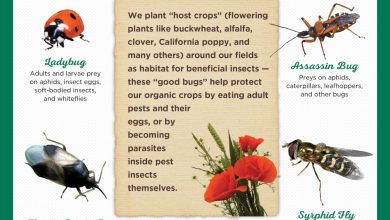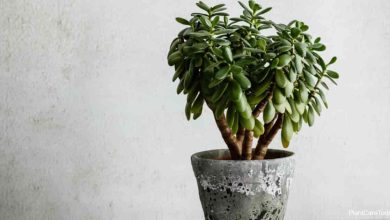How to grow the tree of paradise?

One of the most used trees in landscape gardens is the elaeagnus angustifolia, popularly known in Spain as the tree of paradise. This is mainly due to the foliage, flowers and fruits that are showy. However, certain characteristics must be taken into account to cultivate it in the best possible way.
The paradise plant comes from Asian Russia and can grow from 3 to 10 meters high, so we can find a small specimen that serves to delimit spaces around houses, but also a medium-sized tree that can be isolated. For this reason, the species is indicated as an ornamental background solution or to create protection walls, thanks to the fact that it has small thorns on the branches.
Differences and similarities between Elaeagnus angustifolia and Melia azedarach
Before continuing, it is vitally important to differentiate between these two trees, since they have different uses and properties, although both are of Asian origin and are known as the tree of paradise. Elaeagnus angustifolia is native to southwestern Asia, while Melia azedarach is from southeastern Asia. Likewise, the first one has edible fruits similar to dates due to its sweet taste and its elongated seed. On the contrary, the fruits of the second are harmful to health.
The tree of paradise is the name given to Elaeagnus angustifolia in Spain, while the Melia azedarach tree is known as cinnamon. However, in some South American countries, such as Argentina and Uruguay, it is also called the tree of paradise, although they are species from different families.
In this sense, it is true that these two trees share a characteristic, and that is that they both have fragrant flowers that are constantly visited by bees. However, the flowers of Elaeagnus angustifolia are yellow inside and whitish outside. For its part, the Melia azedarach has white flowers with lilac.
For the purposes of simplifying the information, from this point on we will only mention the tree of paradise to refer to the Elaeagnus angustifolia. Let’s see how the cultivation of this plant should be to ensure a correct development and facilitate a long life.

Germination
The first thing to say is that you can buy ready-to-sow seeds online, which are usually cheap, but if you have a tree of paradise nearby, then you can directly use the fruits without making any investment. In this case, you should pick them when they are fully ripe, you will recognize them by their orange tone and meaty texture.
The fruit of paradise is a drupe, which means that each one has a single seed surrounded by sweet-tasting pulp, therefore, you can eat it or simply remove and clean the seed well, to reserve in a cool place during the growing season. winter and then plant at the beginning of spring. It is worth noting at this point that the germination process does not work properly if the fruits are green, therefore it is better to wait for them to fully ripen.
The seeds of Elaeagnus angustifolia have a fairly hard surface layer, which serves to prevent excess moisture, however, this can delay germination, for this reason, it is advisable to carefully make a small notch so that they begin to sprout faster.. Usually the germination period lasts about 2 months. However, some sellers of these seeds recommend a previous process of warm stratification for 10 weeks at 25 ºC, and then go on to cold stratification for 12 weeks with temperatures of 1 to 5 ºC.
Cultivation and care
Once the seedling has green leaves, wait until it is large enough to handle safely and transplant the tree from the pot to the ground. In addition, it is important to choose a space in light shade or preferably in full sun and take into account that when it grows it can reach a diameter of approximately 5 to 7 meters. However, it can also be planted in series to form hedges, as it responds well to pruning.
As for the soil, the best option is a properly drained and light soil, which is neither too dry nor too wet, although we must say that it is a very vigorous species, capable of growing rapidly even in saline, dry, stony soils. and poor, as well as in heavy soils and with great humidity. In any case, it is always advisable to remove stones, weeds and sticks and then remove the soil with a garden tool that you have at home. It is not necessary to have the best racket of the moment, the most important thing is to use it correctly. If you have a hoe, the job will be easier.

It’s good to know that the paradise tree withstands summer heat, moderate winds, and salty air. However, it is not suitable for areas with many frosts, although it can withstand some. In winter, this plant loses its leaves, exposing attractive brown bark on the branches and trunk. As for the fruits, they begin to appear from the third year.
On the other hand, we must point out that it is a low maintenance tree, since it does not have a tendency to suffer from diseases or pests. In fact, this genus is often particularly resistant to the honey fungus, which adversely affects many other species. However, it is also true that the paradise tree itself is considered an invasive species in the United States, where government strategies have had to be created to control its expansion.
To conclude, it must be said that in Spain Elaeagnus angustifolia appears in the Atlas of Invasive Alien Plants, but as a preventive measure, since no real inconvenience has been recorded in this regard. Therefore, it remains an interesting tree to plant in any garden.

![Photo of Subsistence Agriculture: [Concept, Operation, Advantages and Disadvantages]](https://www.complete-gardening.com/wp-content/uploads/2022/08/subsistence-agriculture-concept-operation-advantages-and-disadvantages-390x220.png)


